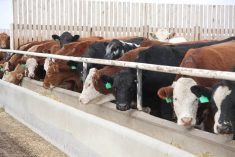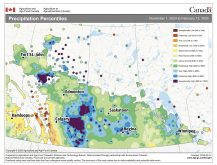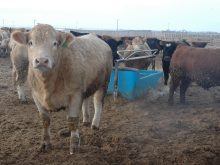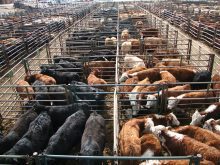This cattle market information is selected from the weekly report from Canfax, a division of the Canadian Cattlemen’s Association. More market information, analysis and statistics are available by becoming a Canfax subscriber by calling 403-275-5110 or at www.canfax.ca.
Fed prices near highs
Prices usually decline from May to June but not this year. Alberta fed prices have averaged in the low $170s per hundredweight for the past five weeks and are within 50 cents per cwt. of highs posted four weeks ago. For the start of June, it’s the second highest price on record.
Read Also

Government support for Canadian farmers has plummeted
Subsidies in Canada were 30 per cent of gross farm receipts in 1980s and are now around eight per cent
Year to date western Canadian fed beef production is five percent larger than last year, while year to date fed prices are up seven percent. In other words, more beef is being produced at higher prices. This is a testament to the strength of beef demand this year.
Dressed sales were reported from $290-$292 per cwt. delivered. Most of the cattle that traded were scheduled for the weeks of July 11 and 18 delivery. Ontario fed prices were trading at an $18 per cwt. premium against the Alberta market so cattle from Alberta are being shipped to Ontario for slaughter.
The Alberta fed cash-to-futures basis weakened last week, going from +$4.07 per cwt. to +$1.20. Western Canadian fed slaughter over the previous four weeks averaged 43,043 head per week compared to 40,008 head per week last year.
Dressed sales in Ontario were marked at $320 per cwt. delivered, fully steady with the previous week. The Ontario fed cash-to-cash basis is at an estimated $10.93 per cwt. premium against the Nebraska market.
Market ready supplies are expected to stay manageable over the next 30 days but larger summer volumes are on the horizon. Though western Canadian fed prices did not establish new highs, they were close.
In the United States, dressed sales in Iowa and Nebraska ranged from US$224-$230 per cwt., $5- $8 per cwt. higher than the previous week. Live sales in Nebraska were reported at $141-$143 per cwt., $1-$3 per cwt. higher. Sales in Texas and Kansas were from $136-$137, $1-$2 per cwt. higher. For the second consecutive week, U.S. beef cow slaughter was over 80,000 head. Weekly beef cow slaughter volumes are the largest since December 2011.
Cow price strengthens
An ample offering of non-fed cattle saw prices steady to stronger last week on good seasonal trim and grind demand. D2 slaughter cows traded sideways, averaging $103.83, while D3 prices firmed over $1.50 per cwt. higher to average $92.21.
Dressed cow bids were steady with the previous week from $205-$210 per cwt. delivered. Butcher bull prices rallied $2.23 per cwt. higher than the previous week to a new annual high of $129.39 per cwt. It is the strongest average price since the same week in 2017.
Fed cattle/cow exports to the U.S. for the short Victoria Day week ending May 28 eased nine percent lower than the previous week to 7,961 head and slaughter bull exports slipped 16 percent lower to 595 head.
Steady to stronger non-fed prices are anticipated as good domestic demand continues and exports to the U.S. realign higher. Scattered moisture has been welcomed across parts of the prairies, but pasture and forage got off to a lacklustre start so more precipitation would be welcome.
Plenty of feeders sold
Alberta feeder cattle traded unevenly steady to stronger last week on a seasonally contra large offering. Calf prices were generally $1 per cwt. lower to $3 per cwt. higher than the previous week for steers and heifers. Large feeders over 800 pounds traded mixed with steer prices stronger, while heifer values easing $2 per cwt. lower.
Good eastern buying interest was observed last week with Alberta feeders traded at a significant discount to Ontario. Manitoba feeder suppliers have tightened. Alberta auction volumes were 23 percent larger than same week last year at 19,002 head but were eight percent smaller than the previous week. Weekly auction volumes have been larger than year ago for 14 out of the past 22 weeks and year to date volume was five percent larger than the same week last year at 574,390 head.
Canadian feeder exports to the U.S. for the week ending May 28 dipped 14 percent lower than the previous week to 3,405 head. Year to date feeder exports are significantly 205 percent larger than year ago at 115,960 head.
U.S. cutouts rise
In U.S. beef trade, all Choice primals were up from last week. Choice cutouts averaged US$271.10 and Select averaged $249.61.














